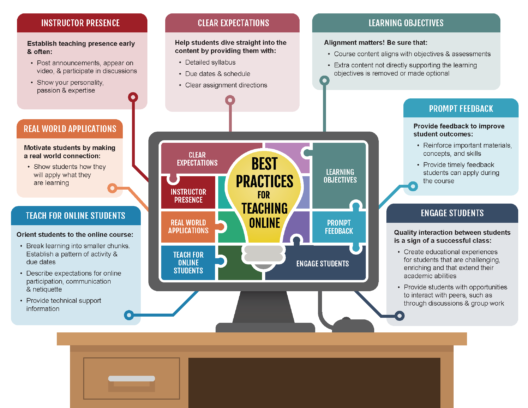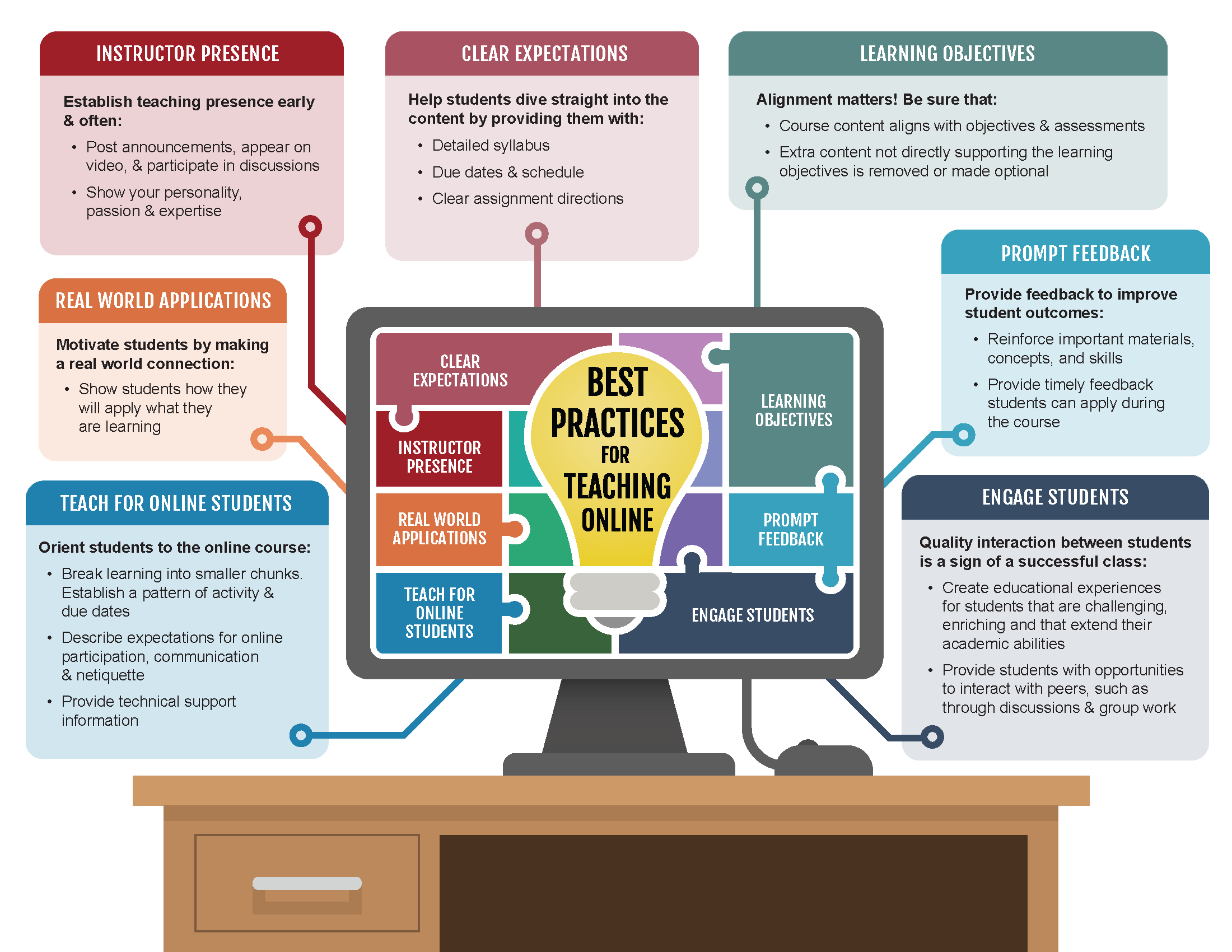Best Practices for Teaching Online
By Andrew Salcido and Jessica Cole
One of the most common questions an Instructional Designer is faced with is, “How can I enhance the student experience in my online course?” Often times, instructors wish to replicate the activities they do in face-to-face courses in the online environment but are not sure where to begin. One recommendation is to consult an instructional designer.
We also strongly encourage instructors to participate in the Master Class for Teaching Online, an online workshop designed to facilitate peer sharing of strategies for teaching online. The workshop is facilitated by a team of instructional designers and touches on several best practices. The graphic presented here lists seven best practices for teaching online. Incorporating these best practices will help ensure that you and your students stay engaged and have a positive experience.
Best Practices for Teaching Online

Instructor Presence
Establish teaching presence early and often:
- Post announcements, appear on video and participate in discussions.
- Show your personality, passion, and expertise.
Real World Applications
Motivate students by making a real-world connection:
- Show students how they will apply what they are learning.
Teach for Online Students
Orient students to the online course:
- Break learning into smaller chunks. Establish a pattern of activity and due dates.
- Describe expectations for online participation, communication, and netiquette.
- Provide technical support information.
Clear Expectations
Help students dive straight into the content by providing them with:
- Detailed syllabus.
- Due dates and schedule.
- Clear assignment directions.
Learning Objectives
Alignment matters! Be sure that:
- Course content aligns with objectives and assessments.
- Extra content not directly supporting the learning objectives is removed or made optional.
Prompt Feedback
Provide feedback to improve student outcomes:
- Reinforce important materials, concepts, and skills.
- Provide timely feedback students can apply during the course.
Engage Students
The quality of interaction between students is a sign of a successful class:
- Create educational experiences for students that are challenging, enriching, and that extend their academic abilities.
- Provide students with opportunities to interact with peers, such as through discussion and group work.
Recommended Resources:
- Miami University. Best Practices for Teaching Online. https://miamioh.edu/academics/elearning/faculty-resources/teaching-online/index.html (accessed August 22, 2019).
- Brown University. Best Practices for Teaching Online. https://www.brown.edu/academics/professional/faculty/online/best-practices.php (accessed September 7, 2018).
Graphic created by Ron Carranza, Andrew Salcido, and Jessica Cole. Updated August 22, 2019.



